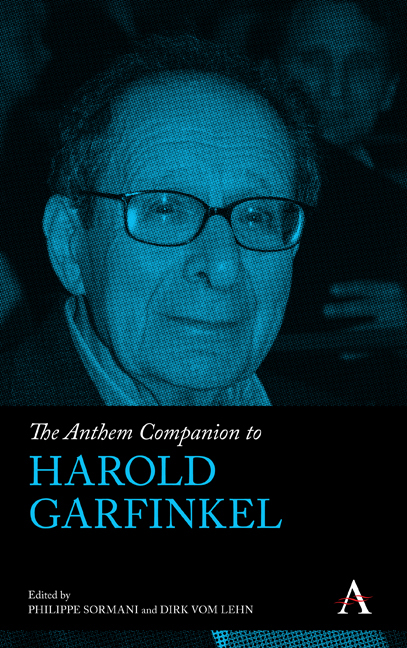Book contents
- Frontmatter
- Contents
- List of Illustrations
- Introduction: Rediscovering Garfinkel's “Experiments,” Renewing Ethnomethodological Inquiry
- Part I Exegesis
- Part II ‘Experiments’
- Part III Implications
- Postface: “Experiments”—What are we Talking About? A Plea for Conceptual Investigations
- Notes on Contributors
- Index of Names
- Index of Subjects
Chapter Eleven - Rereading Galileo's Inclined Plane Demonstration
Published online by Cambridge University Press: 28 February 2024
- Frontmatter
- Contents
- List of Illustrations
- Introduction: Rediscovering Garfinkel's “Experiments,” Renewing Ethnomethodological Inquiry
- Part I Exegesis
- Part II ‘Experiments’
- Part III Implications
- Postface: “Experiments”—What are we Talking About? A Plea for Conceptual Investigations
- Notes on Contributors
- Index of Names
- Index of Subjects
Summary
Introduction (by Kenneth Liberman)
During the final decade of Harold Garfinkel's life, I had the habit of stopping by his home for several days while I was driving between Eugene, Oregon (where I taught), and Baja California Norte (where my principal home is). Because I grew up in the same coastal hills of Los Angeles where Garfinkel lived, and because my parents had passed away, I liked to stay with Harold and Arlene not only to visit them but also to reconnect temporarily with the landscape, the smell of the coastal chaparral and drink in some of the Yiddish-American culture of my childhood. As my price of residence, Harold usually extracted some presentation of data from my research (a few of which became chapters in my More Studies book, Liberman 2013), or as Harold grew progressively blinder, I would read to him articles he selected.
On this occasion, which took place a year before his death, I had pulled his Ethnomethodology's Program book off the shelf (Garfinkel 2002a) and asked him which chapter he considered to be the most important. First he replied, “Oh, no one chapter in particular is more important than the others.” At this point in his life, Harold had gone 95 percent blind. He was able to detect light, and on his best days he could make out figures that stood inside a circle of visibility of about one degree (such an event occurred, to his delight, at line 4 of the transcript: “Oh! I can see you!”). After a minute had passed, Harold announced to the ceiling, “Actually, I think Chapter 9 is the most important one.” I responded, “Ohh, too bad. That's the only chapter I feel I haven't fully understood.” I then suggested, “Why don't we read that one today?” (i.e., Garfinkel 2002b). He approved the idea with enthusiasm. Because the chapter is dif¬ficult and his congestive heart disease caused him to become exhausted easily, it took us all three days of my visit to finish reading it aloud. I taped the reading so that I could capture any fresh explorations the reading might motivate, and what is included here is a selection I transcribed from that tape recording.
- Type
- Chapter
- Information
- The Anthem Companion to Harold Garfinkel , pp. 203 - 216Publisher: Anthem PressPrint publication year: 2023

